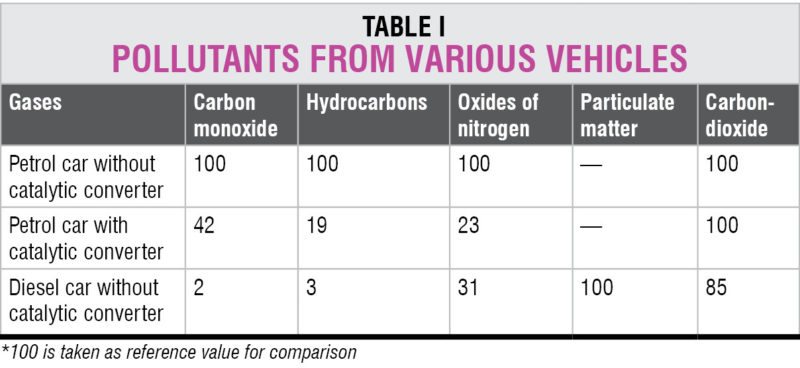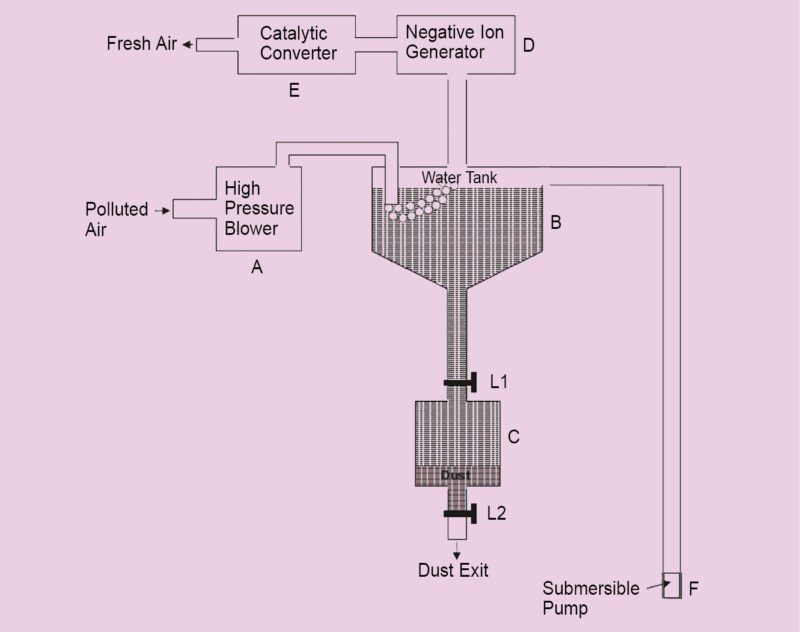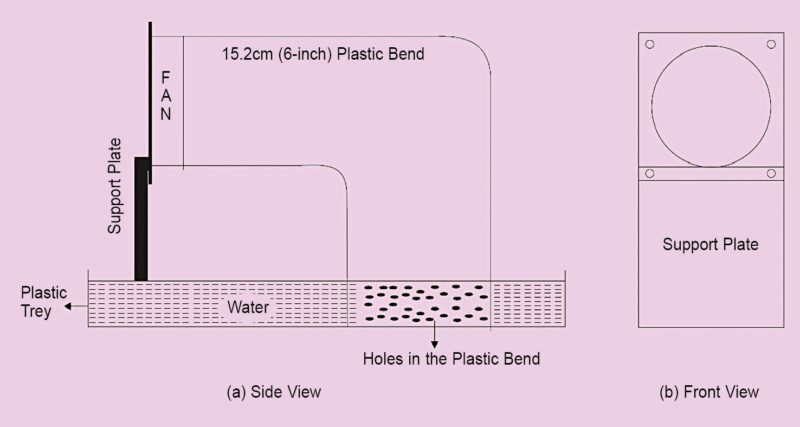This article takes a look at the causes, effects and control of air pollution in the urban environment. It also introduces easy-to-construct home and commercial air-purifier systems to effectively control air pollution, and release clean and safe-to-breathe air back into the environment.
Air pollution contains one or more contaminants like dust, harmful gases, smoke, pollen and other allergens.
Normal composition of air is:
Nitrogen – 78%
Oxygen – 21%
Argon – 0.9%
Carbon-dioxide – 0.037%
Ozone, helium and ammonia – Traces
Water vapour – Balance
Table I indicates the mix of pollutant gasses released from petrol and diesel based vehicles.

Table II summarizes the source of major pollutants and their impact on the health of human beings.

We now introduce you to system designs for easy-to-construct air purifiers for home and commercial uses. (Note: A prototype of the air purifier for home use has already been tested successfully by the author.)
Air purifier system for home and industrial use
Commercially, a large number of air purifiers are available for domestic use, but are quite expensive. You can make a simple air purifier for domestic use using easily available materials from the market. The same can be customized for use in hazardous industries as well, to improve the working conditions and health of the industrial labour.
An air purifier system can be made using a 15.2cm (6-inch) fan from Rexnord. As shown in Fig. 1, the fan is fitted on one side of a plastic bend with 15.2cm (6-inch) dia that is normally used for sanitary work. The other end of the bend is covered with a plate having holes and is kept submerged in a plastic tray filled with water.

On switching on the fan the system clears the air of all suspended particulate matter and dissolves water-soluble gases. Bubbles coming out of the water contain fresh air. This air can be passed through a negative-ion generator. Negative ions clear the air of dust, pollens, pet dander, mold spores and other potential allergens. It can also significantly decrease airborne viruses and bacteria.
A negative-ion generator is easily available from online sites like Amazon.
Air purifier system for roads
A commercial version of such a system for use in the open is illustrated in Fig. 2.
Polluted air is thrown by high-pressure blower A into tank B that is full of water, as shown in Fig 2. This air leaves most suspended particles in the water, which settle down with time in dust tank C. Normally, lever L1 is open and lever L2 is closed.

Water-soluble toxic gases like NOx, SO2 and NH3 get dissolved in water. Due to sucking of air from road, most particles of 2.5 and 10 microns move from the road into this system.
Submersible pump F is used to fill water in the tank whenever required.
Purified air is passed to chamber D that is fitted with a negative-ion generator. This clears the air of remaining dust particles, if any, including pollens, pet dander, mold, spores, germs and other allergens.
Air is forwarded to catalytic converter chamber E. This removes gases like carbon monoxide and nitrogen oxide. Air coming out of this system is thus reasonably pure. When chamber C gets filled with dust, lever L1 is closed and lever L2 is opened to remove the dust into a dustbin.
Key benefits
Major benefits of such an air purifier are:
• Gives clean air using a highly-effective system that progressively reduces suspended particles and gaseous pollutants from the vicinity
• Gives pure air using a system for the removal of germs, pollens and allergens
• By-products can be utilised for other commercial uses
• Easy to construct using commercially-available components
• Low-maintenance system having a filterless design










